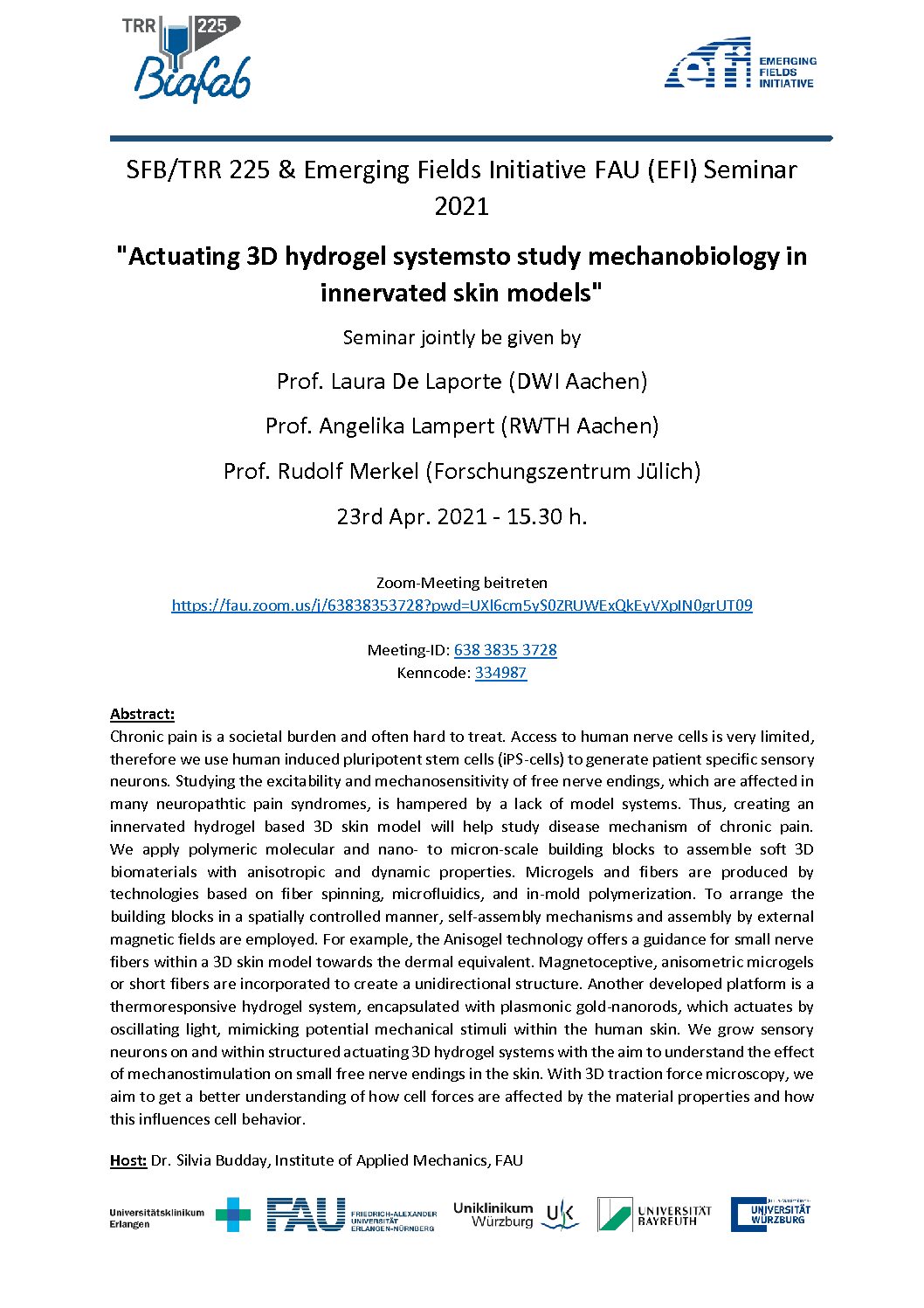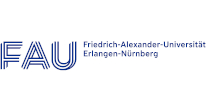
Virtual SFB/TRR 225 & EFI (FAU Erlangen) seminar on April 23 at 15:30h, which will jointly be given by
Prof. Laura De Laporte (DWI Aaachen)
Prof. Angelika Lampert (RWTH Aachen)
Prof. Rudolf Merkel (Forschungszentrum Jülich)
on
“Actuating 3D hydrogel systems to study mechanobiology in innervated skin models”.
Abstract:
Chronic pain is a societal burden and often hard to treat. Access to human nerve cells is very limited, therefore we use human induced pluripotent stem cells (iPS-cells) to generate patient specific sensory neurons. Studying the excitability and mechanosensitivity of free nerve endings, which are affected in many neuropathtic pain syndromes, is
hampered by a lack of model systems. Thus, creating an innervated hydrogel based 3D skin model will help study disease mechanism of chronic pain.
We apply polymeric molecular and nano- to micron-scale building blocks to assemble soft 3D biomaterials with anisotropic and dynamic properties. Microgels and fibers are produced by technologies based on fiber spinning, microfluidics, and in-mold polymerization. To arrange the building blocks in a spatially controlled manner, self-assembly mechanisms and assembly by external magnetic fields are employed. For example, the Anisogel technology offers a guidance for small nerve fibers within a 3D skin model towards the dermal equivalent.
Magnetoceptive, anisometric microgels or short fibers are incorporated to create a unidirectional structure. Another developed platform is a thermoresponsive hydrogel system, encapsulated with plasmonic gold-nanorods, which actuates by oscillating light, mimicking potential mechanical stimuli within the human skin. We grow sensory neurons on and within structured actuating 3D hydrogel systems with the aim to understand the effect of mechanostimulation on small free nerve endings in the skin. With 3D traction force microscopy, we aim to get a better understanding of how cell forces are affected by the material properties and how this influences cell behavior.





